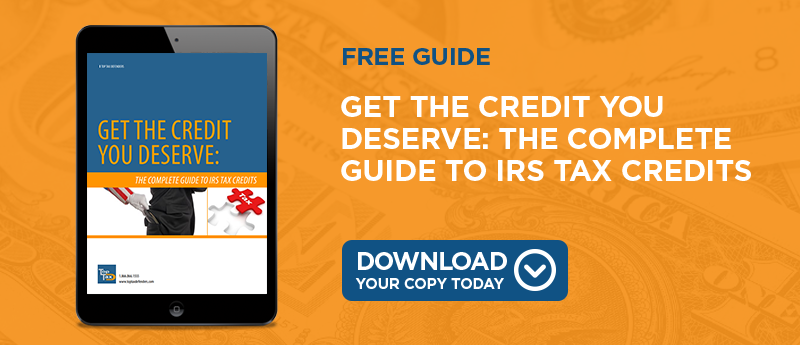
If you weren’t one of the taxpayers caught off-guard by a smaller than expected tax refund last spring, or worse, received an unexpected tax bill, the IRS has a tool for you.
The agency has done a complete update and rework of its old online tax-withholding calculator. You can more easily estimate your withholdings even if you aren’t a single income W-2 wage earner. The IRS acknowledges the many ways taxpayers receive income and now seeks to clarify the processes of determining the best withholding amount for your household.
If you use the calculator now, you can make adjustments for the remaining months of 2019 to have more accurate withholdings. Done right, you can owe near zero for taxes next April or even get a small refund, while (hopefully) enjoying more cash in your regular paycheck. Also, you can rest your worry-circuits when the taxman cometh. You can be confident you are on track with your taxes.
Why the IRS Created Its New Tax Withholding Estimator
Under the Tax Cuts and Jobs Act of 2017, several changes to the tax code caused many individuals to underestimate the tax they owed for 2018. Even though the feds told everyone to do a tax checkup, many were put off by the awkward tool provided online. Last April, they got a nasty surprise. TCJA threw some curveballs.
- The Act changed tax rates midstream.
- It places limits on deductions for state and local taxes.
- It capped the amount someone could borrow for the purposes of home mortgage interest.
- And it created exclusions for some types of job-related expenses (like the home office deduction).
The result was smaller refunds, unexpected tax bills, and a lot of confusion. To put it lightly, the taxpayers were a little steamed.
The IRS, uncharacteristically, listened to The People and decided to help out before the same thing happened again in 2020. They took the old online calculator that was still based on working patterns of 1950 and updated it to the 21st century.
The agency also took into account the raging privacy issue that seems to be snowballing by the day. The estimator does not ask you to enter any personally identifying information such as your name, social security number, or bank account information. Also, it doesn’t record or save the information you do put in.
You Need to Use This Estimator Thingy NOW
Even if you think you have your tax withholding under control, you need to do the recommended tax checkup to avoid any more shocks. Nothing is scarier than finding out you owe Uncle Sam money when you were expecting to get a little (or a lot) back.
The new estimator works much better than it used to for workers, retirees, self-employed individuals, and dual wage-earner households.
- The new design lets you put in pensions and other income separately.
- If you had a major life change like getting married or divorced, having a baby, getting a new job, or getting a raise, you definitely need to check on your withholding.
- You get specific recommendations about your withholding for each job and spouse with clear explanations of what to do next.
Do this soon because you don’t want to have to pay more in taxes or incur penalties.
The Estimator Has These Lovely Features
The top of our list is that the new estimator offers improved tips and links to help you determine if you qualify for different tax credits and deductions. Everything is rendered in language people can actually understand.
As part of the update, the estimator is also mobile-friendly, great for the generation that can’t pry their smartphones out of their cold, dead hands. It also contains six different sections and lets you know how far along you are with your data entry work.
There’s a household information section where you declare if you are single, married filing jointly, and so on. You also add your dependents and other information.
The income section has more options to enter different income streams than before.
- Social security benefits
- Unearned income from interest, annuities, trust fund distributions, alimony, and dividends
- Scholarship or grant money that you have to declare as income
- Unemployment compensation
- Earned net income from self-employment
- Earned income from other sources
Then there’s a section for adjustments to income. These are tax deductions you can take for income that can’t be taxed. The adjustments include certain educational expenses, business expenses, savings accounts like IRAs, medical expenses, and legal obligations.
The deductions from income section gives you room to enter taxes paid, charitable gifts, casualty losses, and qualified mortgage interest.
The final two sections are the tax credit section and the results section. The results are the recommendations for making any changes for your withholding and other actions.
With this tax estimator, you can go back and fix errors without starting over. Also, you can skip questions that don’t apply to your tax situation. The results contain specific withholding suggestions for each job and each spouse, plus explains what you need to do next in the process.
Documents and Information You Need Handy
You should have several pieces of information available as you work through the estimator:
- Your most recent pay stub and your spouse’s most recent pay stub.
- Your most recent tax return with a copy of the completed Form 1040.
- How much you have withheld for taxes so far this year.
- How much you plan to contribute to a 401K plan this year.
- How many children you claim for the child tax credit.
- An estimate of this year’s income.
- The amount of your earned income tax credit.
You can enter student loan interest and alimony paid if you want, but those are optional.
What to Do Next
Take the information from the results section and use it for a paycheck checkup. If needed, update your W-4 and give it to your employer as soon as possible. If you need to withhold more, you want that to start quickly, so you have more time to pay into the system.
You should have enough information to decide if you are withholding enough, too little, or too much. You should be able to whittle the final result to near zero at tax time or, possibly, a small refund.
If you receive a pension, update your W-4P. If your circumstances change, go through the estimator again with your new information.
There are three ways to adjust your withholding.
- Change the withholding allowances on your W-4.
- Have your employer take an extra flat-dollar amount from each paycheck.
- Pay estimated taxes throughout the year.
As we said, pick one but do it soon. There’s very little of the year left.
Who Needs to Do This?
- Taxpayers who itemized in the past but will now take the standard deduction.
- Two wage-earner households.
- Employees with non-wage sources of income (like that passive stream from your popular blog).
- People with complex tax situations.
Hey, every little bit helps, right? So take some time this week to sit down and make sure you have enough withholding to avoid paying a steep bill in April 2020 without giving Uncle Sam more than necessary throughout the year.




